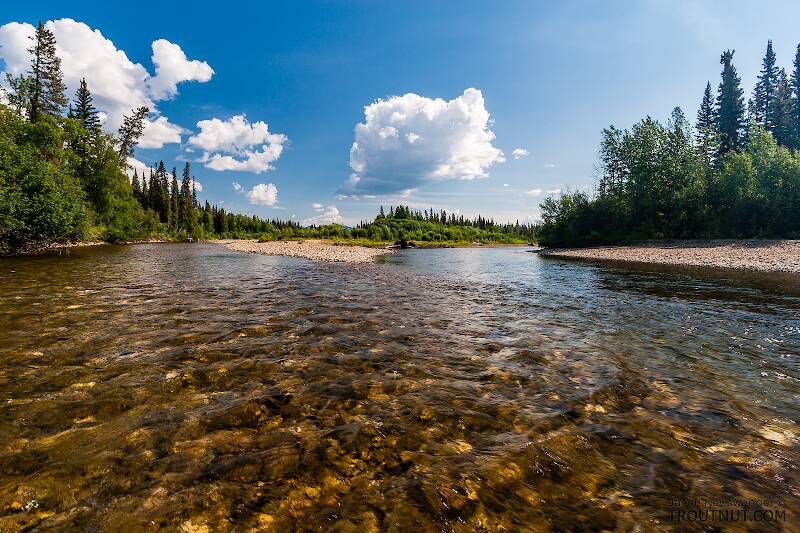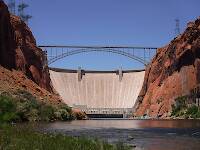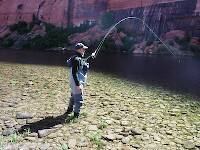
Hex Mayflies
Hexagenia limbata
The famous nocturnal Hex hatch of the Midwest (and a few other lucky locations) stirs to the surface mythically large brown trout that only touch streamers for the rest of the year.
Featured on the forum

This one was surprisingly straightforward to identify. The lack of a sclerite at the base of the lateral hump narrows the field quite a bit, and the other options followed fairly obvious characteristics to Clostoeca, which only has one species, Clostoeca disjuncta.

Troutnut is a project started in 2003 by salmonid ecologist Jason "Troutnut" Neuswanger to help anglers and
fly tyers unabashedly embrace the entomological side of the sport. Learn more about Troutnut or
support the project for an enhanced experience here.
Troutnut on Jul 23, 2006July 23rd, 2006, 5:00 am EDT
This season pretty much every hatch in the East and Midwest in the early to mid-season happened from 1 to 3 weeks earlier than the range of emergence dates published in most books should allow, because it's been such a warm year.
Was this the case in the West, too?
Was this the case in the West, too?
Jason Neuswanger, Ph.D.
Troutnut and salmonid ecologist
Troutnut and salmonid ecologist
Taxon on Jul 23, 2006July 23rd, 2006, 7:38 am EDT
Jason-
Don't seem to get out enough anymore to even form an opinion, and don't recall hearing any comments about delayed hatches this year.
However, I have posed your question to some professional flyfishing guides here in Washington with whom I have reciprocal links, and will forward you a summarization of their answers.
Don't seem to get out enough anymore to even form an opinion, and don't recall hearing any comments about delayed hatches this year.
However, I have posed your question to some professional flyfishing guides here in Washington with whom I have reciprocal links, and will forward you a summarization of their answers.
Taxon on Jul 27, 2006July 27th, 2006, 2:28 pm EDT
Jason-
Summarizing the responses I got to the question you posed was a bit difficult. However, for the most part, the respondents indicated this year's western hatches were either on time, or later than normal. The delayed hatches likely result from lower water temperatures associated with unusually good snowpack in many western drainages.
Summarizing the responses I got to the question you posed was a bit difficult. However, for the most part, the respondents indicated this year's western hatches were either on time, or later than normal. The delayed hatches likely result from lower water temperatures associated with unusually good snowpack in many western drainages.
Troutnut on Jul 27, 2006July 27th, 2006, 3:21 pm EDT
Okay, thanks for checking on that.
Jason Neuswanger, Ph.D.
Troutnut and salmonid ecologist
Troutnut and salmonid ecologist
Ewp on Jul 30, 2006July 30th, 2006, 1:51 am EDT
We've been in Island Park, Idaho, near the Henry's Fork and Madison since June 5, and most hatches here seem to have followed the normal schedule. If anything, we're experiencing good flavilinea fishing on the Henry's Fork a bit later than I recall from prior years. Salmonflies, golden stones, green drakes, brown drakes and PMDs all seem to have hit the standard. The Callibaetis may have started a tad early on Hebgen Lake, but they are right on schedule now on the Henry's Fork.
For the record, this region had above average snowpack all winter long with temps that were about normal. Early season (May/June) was pretty damp with normal temps. The last month has been above normal in temp and pretty dry.
Eric
For the record, this region had above average snowpack all winter long with temps that were about normal. Early season (May/June) was pretty damp with normal temps. The last month has been above normal in temp and pretty dry.
Eric
Quick Reply
Related Discussions
Topic
Replies
Last Reply
5
Jun 29, 2020
by Troutnut
by Troutnut





